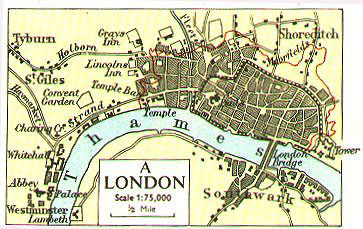London

[Image courtesy of the Internet Medieval Sourcebook.]
Significance within the Decameron:
Stories:
Pampinea: Second Day, Third Tale (Uncles gain lost money through a nephew marrying the daughter of the King of England)
Elissa: Second Day, Eighth Tale (The Count of Antwerp goes into exile and leaves his children in England, and his innocence is restored)
Pertinent data:
General Aspects: The Norman kings selected Westminster as the site for their permanent residence and government. Edward the Confessor (ruled 1042-66) constructed an enormous church dedicated to St. Peter (and later referred to as Westminster Abbey) as well as a royal palace. London, meanwhile, reestablished its role as a centre of trade. In 1300 London had about 80,000 inhabitants that were provisioned by a food-supply network extending 40-60 miles (65-100 km) into the surrounding countryside.
Political Aspects: London usually supported strong, orderly government, especially in such crises as the deposition of Edward II (1327) and Richard II (1399), and in the Peasants' Revolt in 1381. The first evidence of a Court of Common Council dates from 1332.
Images:
Map of London in 1300. Image courtesy of The University of Pittsburgh Medieval Art and Architecture Web-page.
